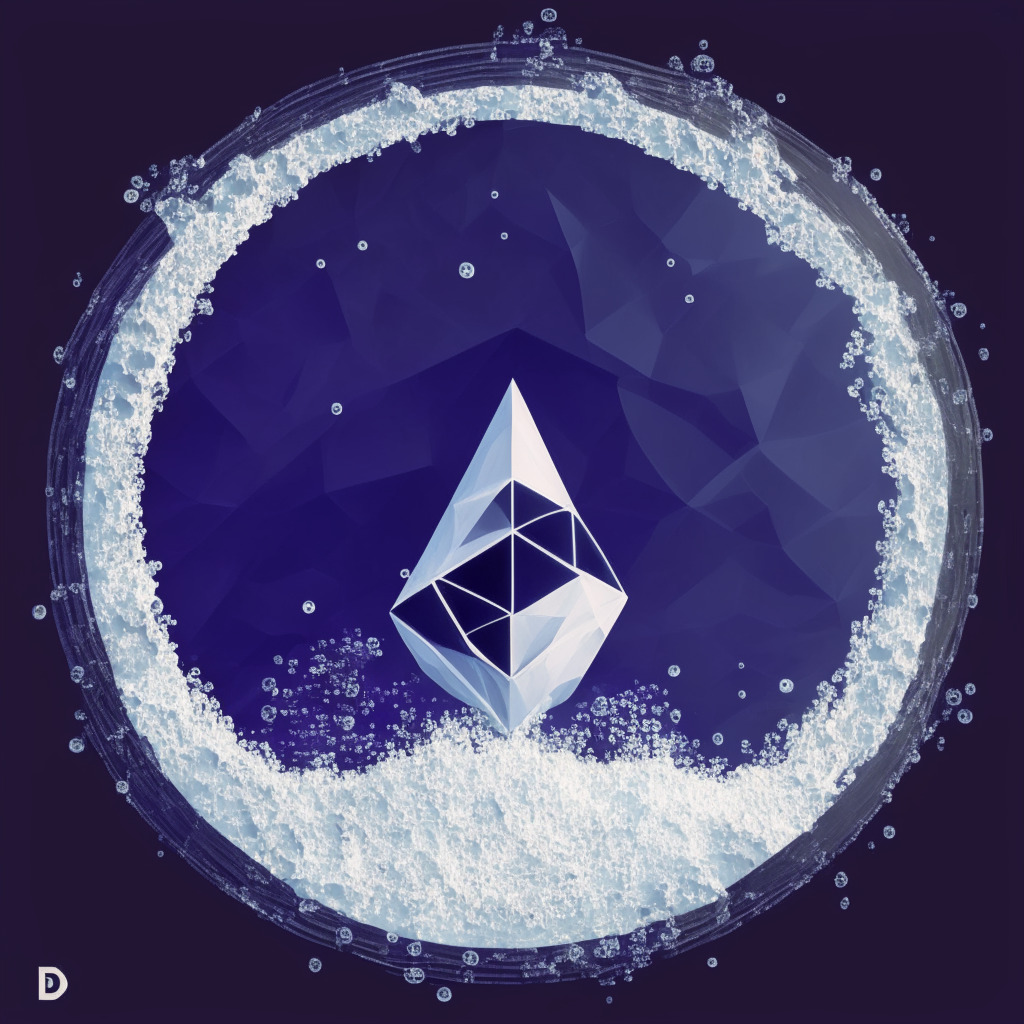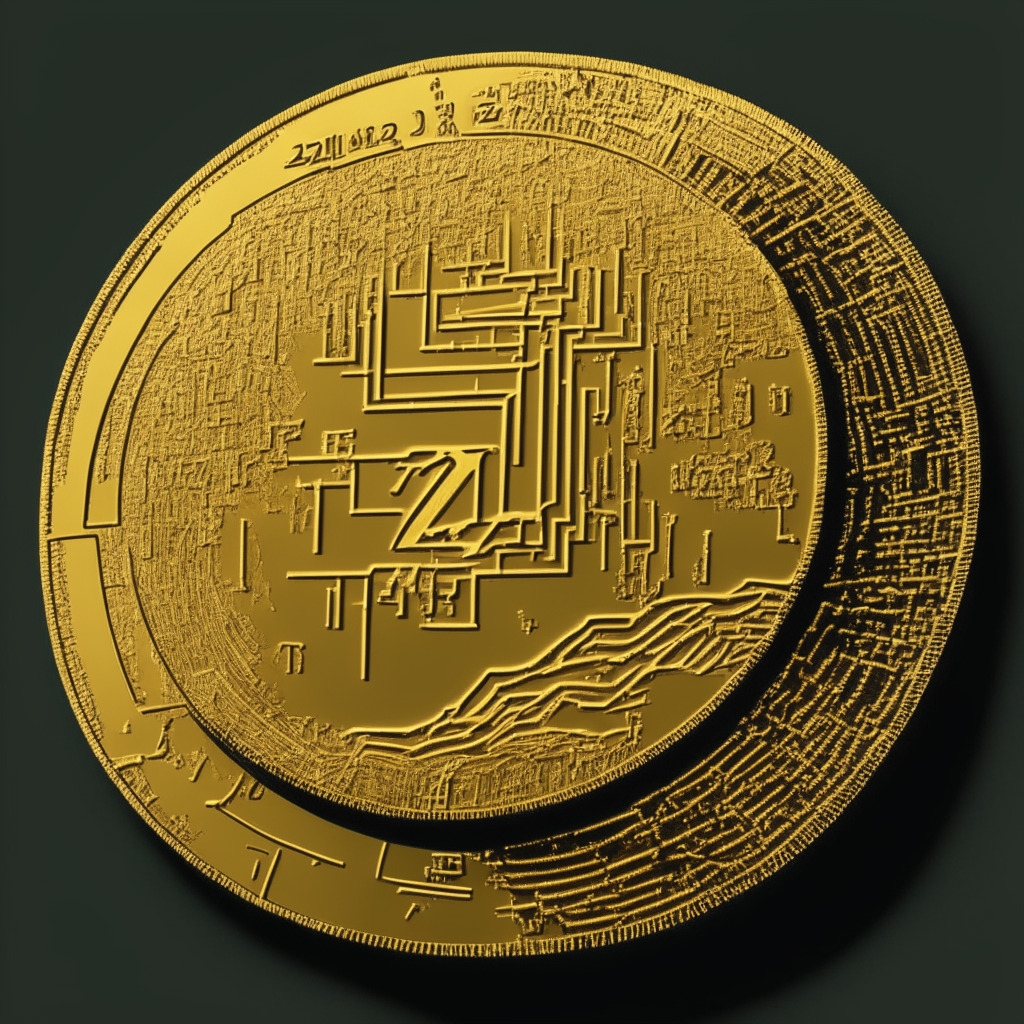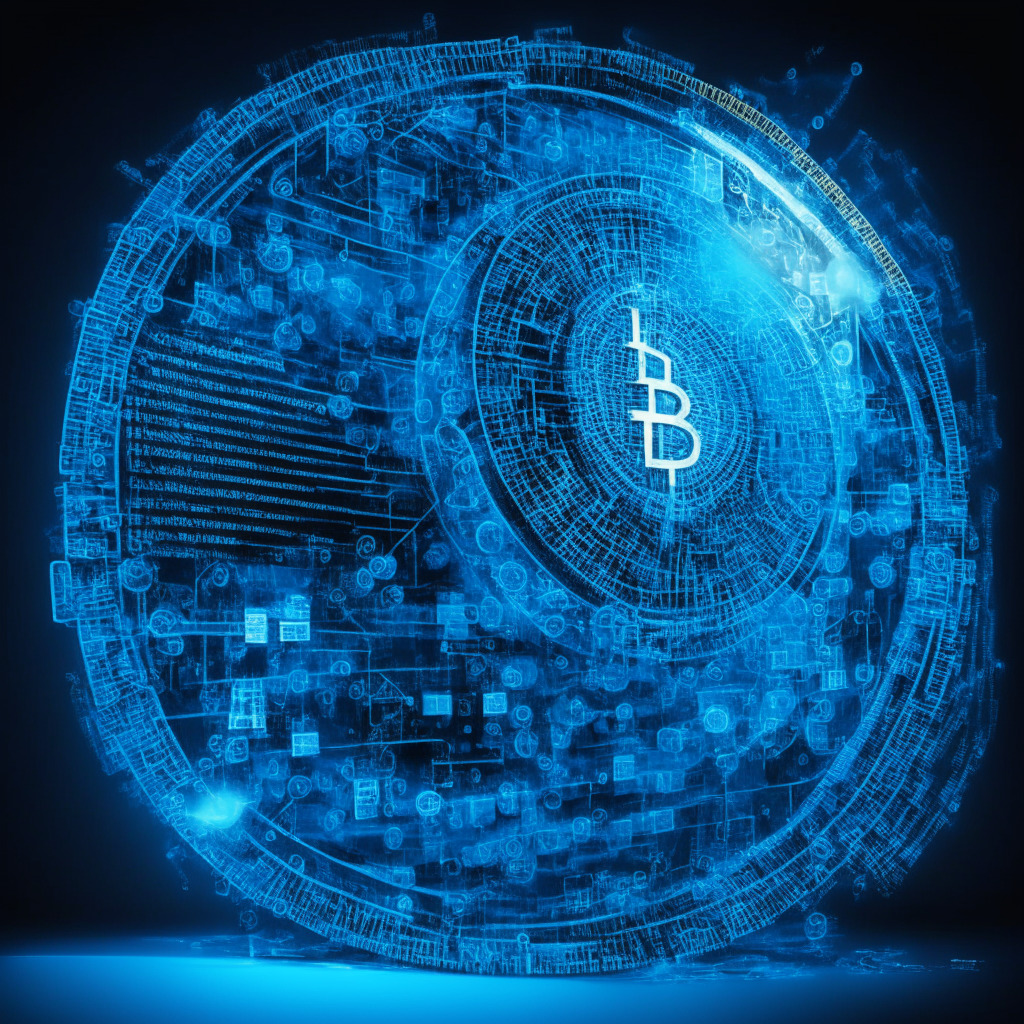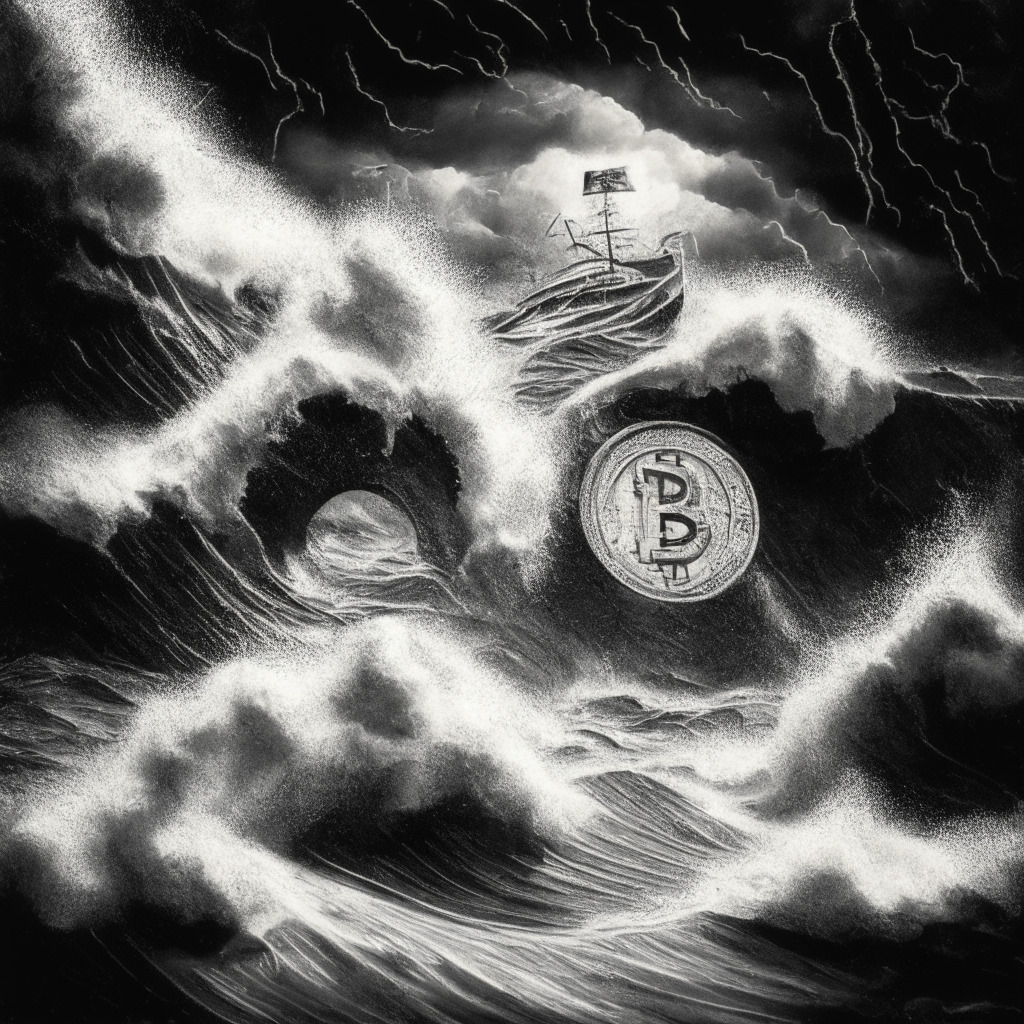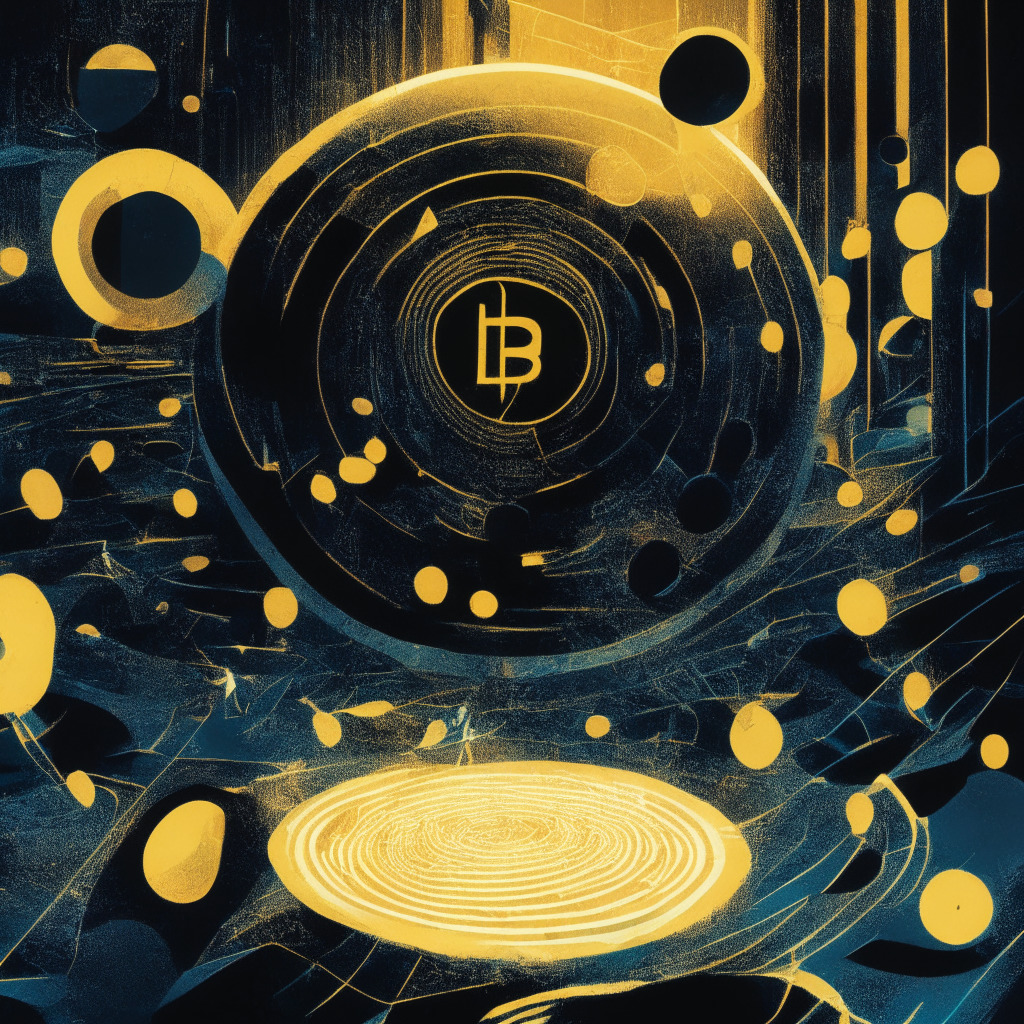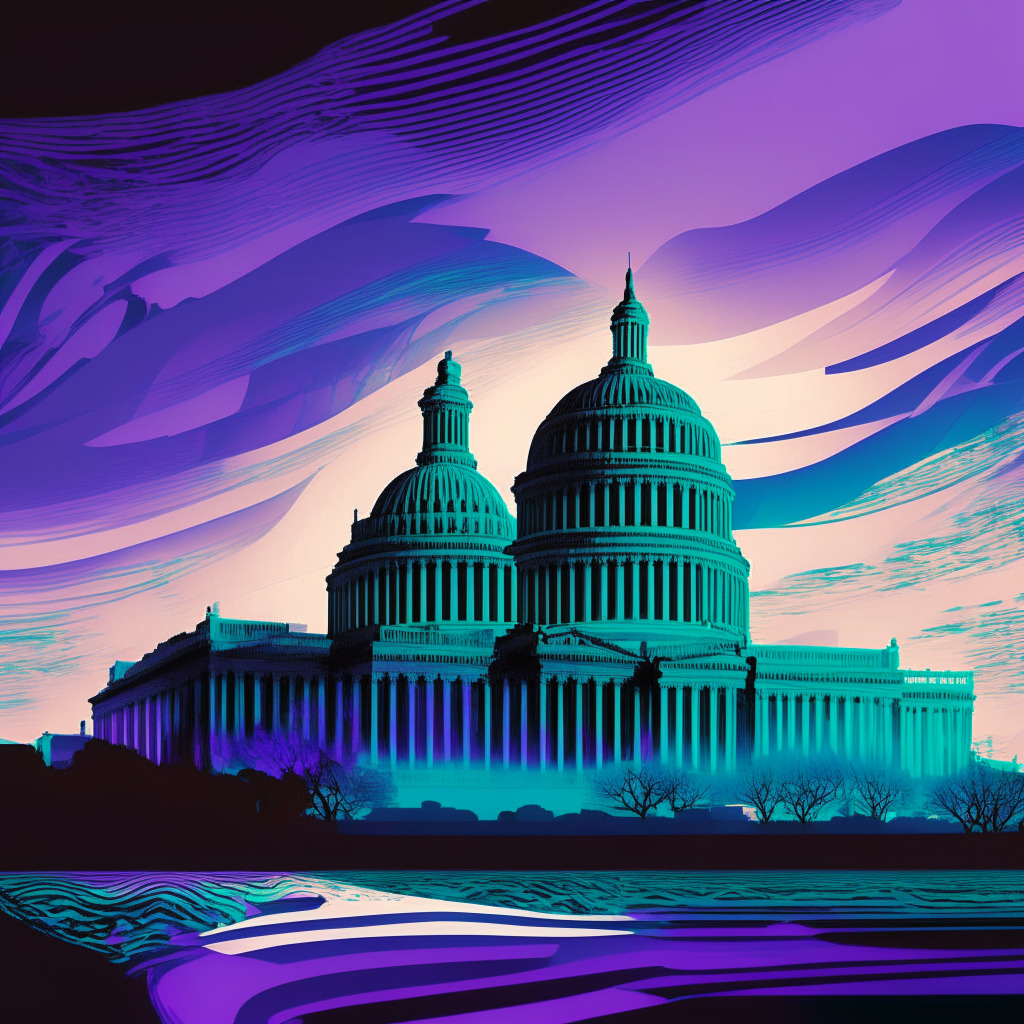Circle, the blockchain and finance tech firm, has revealed its native USDC tokens on the Ethereum Layer 2 scaling protocol, Polygon. This move aims to allow smoother accessibility of USDC to users and developers. Businesses using USDC on Polygon can create decentralized applications for near-instant, low-cost transactions, revolutionizing payments, remittances and trading. However, adoption faces challenges including complex technology and security concerns.
Search Results for: usd
Unwrapping the Saga of Alameda’s USDT Mints & Zimbabwe’s Gold-Backed ZiG Tokens
“Alameda Research has minted over $38 billion in Tether (USDT) tokens in 2021, indicating that the total value of USDT creation surpasses Alameda’s total assets. The inner workings of this process involve benefiting from trade value discrepancies and ensuring USDT’s dollar peg stability. However, this raises ethical concerns for industry watchers.”
PayPal’s PYUSD Stablecoin: Welcomed Asset or Threat to Tether’s Predominance?
Tether co-founder, William Quigley, in a recent interview expressed skepticism towards the acceptance of PayPal’s impending stablecoin. Highlighting that cryptocurrencies earn credibility over time, he outlined that new entrant, PayPal, would face challenges in gaining trust and performance reputation among crypto users. He flagged significant regulatory challenges and the high cost of compliance as potential hurdles for PayPal’s stablecoin.
Xion Unveils Cutting-Edge Layer-1 Blockchain Protocol with Strategic Focus on USDC as Transaction Currency
“CircleBurnt, backed by Animoca and Multicoin, introduces Xion, a novel layer-1 blockchain protocol using USDC, a fiat-backed stablecoin as its primary transaction currency. Xion is designed to simplify web3 complexities, offering tools that require less technical expertise, with the aim of stimulating interaction within the web3 ecosystem.”
Binance Axes BUSD Lending Services: A Setback or Smart Strategy?
“Binance is discontinifying its Binance USD (BUSD) lending services, with a full termination of BUSD support planned for 2024. The decision comes after issuer Paxos severed ties with Binance amid litigation with the U.S. Securities and Exchange Commission. Users are now urged to convert their BUSD to other currencies.”
PayPal’s Venmo and the Stalled Adoption of PYUSD Stablecoin: Analysis and Future Implications
“PayPal’s mobile payment platform, Venmo, has begun offering its Ethereum-based stablecoin, PYUSD, marking a significant step toward integrating cryptocurrency with mainstream finance. Despite its robust structure and support, PYUSD’s adoption has been slow, likely due to competition and regulatory contradictions.”
Rollercoaster Crypto Market: The Rise of USDC over XRP Amidst Turmoil
“The world’s second-largest US dollar-pegged stablecoin, USD Coin (USDC), recently surpassed the total market capitalization of XRP, a digital token powering the decentralized XRP Ledger, triggering interesting market dynamics. Amidst XRP’s continuous struggle amidst lawsuits and downturns, alternative coins backed by significant influencers, such as $WSM, offer promising diversification prospects.”
Is PayPal’s Ethereum-based Stablecoin, PYUSD, Truly 100% Asset-Backed? Examining the Claims
“PayPal’s Ethereum-based stablecoin, PYUSD, has full asset backing, primarily from U.S. Treasury reverse repurchase agreements, says Paxos. Though overcollateralization safeguards assets, it could limit profits. Some PYUSD assets are in uninsured cash deposits, reflecting typical banking risks. PYUSD’s transparent operation may soothe some investors while raising others’ skepticism.”
PayPal’s PYUSD Stablecoin: Shining Beacon or Misstep in Crypto Space?
“PayPal’s proprietary stablecoin, PYUSD, is criticized due to concerns over centralization and potential vulnerability flaws. Its code could pose adoption hindrances and potentially wipe out balances. The crypto community sees PYUSD as a setback, contrasting the ethos of cryptocurrency.”
PayPal Broadens Crypto Horizons: USD Conversion Service Unveiled. Strides or Stumbles?
“PayPal has introduced a service allowing users to convert their digital currencies into US dollars. This ‘off-ramp service’ enables cryptocurrency wallet users to transition into USD for various uses. The service extends to decentralized applications and non-fungible token marketplaces. The collaboration with MetaMask plays an important role in this expansion.”
Revolutionizing Crypto Transactions: Can USDC be the Ultimate Gas Token on Any Blockchain?
Qredo, a crypto safekeeping firm, has partnered to allow its non-custodial wallet to integrate the popular USDC stablecoin. This could simplify the gas fee equation by transforming USDC into the gas token on any blockchain, influencing how crypto enthusiasts perceive USDC in the decentralized applications and protocols sphere.
Deciphering China’s Crypto Future: A Step Beyond USD Dependence?
Chinese scholar, Huang Qicai, suggests digital currencies could stimulate a global transition from USD dependence, potentially leading to a “world currency multi-polarization”. Key nations like China, Russia and Brazil are making significant strides in digital currencies, hinting at a potential change in global monetary governance.
Stablecoin De-Pegging: A Deep-Dive into USDC and DAI Performance versus USDT and BUSD
“Analysts reveal ‘de-pegging’ is more common in stablecoins USDC and DAI compared to Tether and Binance USD. While stability ideally requires good governance, collateral and reserves, market confidence and adoption, USDT has shown steadiness despite mainstream scrutiny.”
The Dawn of Gasless USDC Transactions: OKX and Circle Internet Financial’s Game-Changing Launch
“OKX and Circle Internet Financial have launched USDC features on OKX Wallet and the OKX DEX aggregator, enabling gasless USDC transactions and abolishing network fees for cross-chain exchanges. This advancement denotes a significant stride towards easy-to-use, permissionless on-chain utility. The move also signifies stablecoins’ growing influence in the fiscal ecosystem.”
Crossing Bridges: USDC Expansion to Base & Optimism Networks – A Milestone or Misstep?
In a significant development, USD Coin (USDC) has expanded to Base and Optimism networks, allowing Coinbase and Circle account holders to directly transfer their USDC stablecoin to Base. However, the new native USDC struggles with full integration across networks, causing user confusion and scepticism. The future of this decentralized currency hinges on balancing innovation, competition, and user convenience.
VISA Leverages Solana Blockchain and USDC Stablecoin for Faster International Payments
“VISA has enhanced its stablecoin settlement ability with Circle’s USDC stablecoin on the high-speed Solana blockchain, making it one of the first financial institutions to harness Solana for scaled settlements. VISA’s integration of stablecoins like USDC on global blockchain networks aims to improve international settlements speed and give clients a modern option to conveniently transact funds.”
Robinhood’s Colossal ETH Holdings Vs Binance’s Calculated BUSD Retreat: Winners and Losers in Crypto Sphere
Robinhood, known for its online brokerage services, has been identified as the fifth largest holder of Ethereum ($2.54 billion worth), serving as a secure depository for user balances. Despite this, Robinhood has seen a decrease in their crypto trading activity. Meanwhile, Binance is winding down support for its Binance USD (BUSD) due to allegations of being an unregistered security.
Navigating the Evolution: How Binance’s Decision to Phase Out BUSD Reflects Cryptocurrency Maturation
“Binance’s decision to discontinue support for its BUSD stablecoin signals a shift towards further regulatory compliance in cryptocurrency markets. This move may limit certain freedoms but adds legitimacy and trust, transforming cryptocurrencies into more safeguarded investment instruments amid stringent oversight.”
Navigating the Transition from BUSD to FDUSD in the Crypto Market: Is It Worth the Risk?
“Binance confirmed plans to wind down support for Binance USD by 2024, promoting instead the First Digital USD. This decision follows a regulatory notice by the SEC to Paxos, alleging Binance USD as an unregistered security. The success of First Digital USD depends on its acceptance and adoption within the crypto community.”
Dismantling Binance USD: Unveiling Binance’s Plan to Cease Support for its Stablecoin by 2024
“Binance cryptocurrency exchange plans to remove eight Binance USD trading pairs from its platform, suggesting it could cease support for the stablecoin by 2024. This stems from allegations that the stablecoin’s issuer, Paxos, produced an unregistered security. Concurrently, competitor stablecoin Tether witnesses market growth.”
Circle’s Stablecoin USDC Set to Launch on the Base Network: A Leap Forward or a Leap of Faith?
Circle’s CEO Jeremy Allaire recently announced a significant shift for the company’s U.S. dollar-pegged stablecoin, USDC, which will now launch natively on the Base network. This aims to gradually reduce the need for a bridged coin backed by the Ethereum variant. Despite the development, underlying trust issues remain, emphasising the stability of the Base network and potential issues resulting from reliance on bridged tokens.
PayPal’s PYUSD Stablecoin: A Turbo Boost or Damp Squib for Crypto Adoption?
PayPal’s recently launched stablecoin, PYUSD, appeared to have a slow start with 90% of it residing in Paxos Trust’s reserves and only 7% on crypto exchange wallets. However, despite the somewhat sluggish kick-off, it’s still early days; a shift in the crypto market could significantly change PYUSD’s future prospects.
Navigating Binance.US’s Bold Transition from USD to USDT Amidst Regulatory Challenges
“Binance.US, amid banking challenges, partnered with MoonPay, replacing USD with USDT, turning the exchange into a cryptocurrency-based platform. While facing regulatory scrutiny, it suspended fiat withdrawals and transactions, indicating a retreat from traditional financial systems. The switch raises questions about future banking.”
Coinbase’s Curveball: Acquiring Stake in Circle and Impact on USDC, Coupled With Emerging Legal Battles and Friend.tech’s Surprising Growth
Cryptocurrency exchange Coinbase acquired a minority stake in Circle Internet Financial, causing the dissolution of their Centre Consortium venture, responsible for issuing USD Coin (USDC). Despite this, Circle plans to continue in-house issuance and governance of USDC, which is expanding its support network to include six additional blockchains. Notably, no cash was involved in the transaction between Coinbase and Circle.
Coinbase Set to Acquire Minority Stake in Circle amidst USD Coin Developments
Coinbase is reportedly purchasing a minority stake in Circle Internet Financial, which coincides with Circle bringing the issuance of the USD Coin entirely in-house. Additionally, six more blockchains are to be integrated with USDC. This move comes amidst increasing competition and regulations within the stablecoin environment.
The Ripple Effect of PayPal’s PYUSD: Potentially Forcing a Shift in Stablecoin Regulation Debate
The launch of PYUSD, a stablecoin backed by PayPal with over 430 million users, may accelerate crypto adoption and prompt a shift in U.S. policy towards crypto regulation. Despite previous hesitations, the massive user base might force lawmakers to urgently develop a comprehensive regulated framework for stablecoins, heralding a new era of American crypto companies demanding inclusion in economic life.
Navigating Uncharted Waters: PayPal’s Foray into Stablecoin with PYUSD
“PayPal is venturing into cryptocurrencies with its own stablecoin, PayPal USD (PYUSD), which aims to reduce volatility. Despite competing with established stablecoins in a volatile market, PYUSD’s compatibility with future Web3 applications and PayPal’s reputation could grant legitimacy to the crypto industry.”
Blockchain Paradox: The Potential and Pitfalls of BTC, ETH, BNB, XRP, ADA and USDT
“The world of cryptocurrency, including BTC, ETH, BNB, XRP, ADA, and USDT, hold opportunities and threats. Volatile prices hold promise for vast returns but can present disastrous losses. While cryptocurrencies offer solutions, their susceptibility to hacking raises security concerns.”
PayPal’s PYUSD vs Major Stablecoins: A Battle for Market Share or a Losing Game?
“Bank of America suggests PayPal’s stablecoin, PYUSD, may struggle in the face of established competitors like USD Tether (USDT) and USD Coin (USDC). Factors such as lack of fresh functionality and wallet compatibility issues could impede its progress. However, PYUSD has potential to enhance customer experience within the PayPal ecosystem and capitalize on blockchain-enabled asset transfers, payments, and remittance services.”
Unleashing Stablecoins: Assessing PayPal’s PYUSD Launch Amid Political Divides and Regulatory Turbulence
“PayPal’s recent launch of its stablecoin, PYUSD, under the regulatory framework of the New York Department of Financial Services has stirred conversations about stablecoin adoption. Unlike Meta’s unsuccessful Libra, PayPal’s project is viewed more favorably politically, indicating an imminent regulatory framework for stablecoins in the U.S.”
PayPal’s New Stablecoin PYUSD: Exploring its Potential and Uncertainties
“PayPal’s recently unveiled stablecoin, PYUSD, is predicted to enhance payment efficiency. Despite optimism, reception may vary due to competition from central bank digital currencies and yield-bearing stablecoins. Current investors appear unbothered by the lack of yield and focus on safety and availability.”
Navigating the Cryptoregulatory Waters: PayPal’s Launch of PYUSD Sparks Debate
“PayPal’s launch of its own stablecoin, PYUSD, brings the pressing issue of cryptocurrency regulation into focus. As cryptocurrencies integrate into mainstream financial services, there’s growing consensus on the need for a well-defined regulatory framework that can oversee these innovations while ensuring consumer protection and financial system integrity.”
